| Architect |
Santiago Calatrava |
|
Date Built |
Opened March
3 2016 |
| Location |
70 Vesey
Street |
| Description |
|
|
The Oculus is
Santiago Calatrava's replacement for the
original Port Authority Trans-Hudson
rail system building that was destroyed
on September 11, 2001. The
architect's website explains that the
mandate was to provide a commuter rail
station and at the same time, "...
provide seamless, indoor pedestrian
access to Brookfield Place, towers
1, 2, 3 and 4, as well as the new
Fulton Street Transit Center; and
creates an inspiring, light-filled
public gathering place. .....
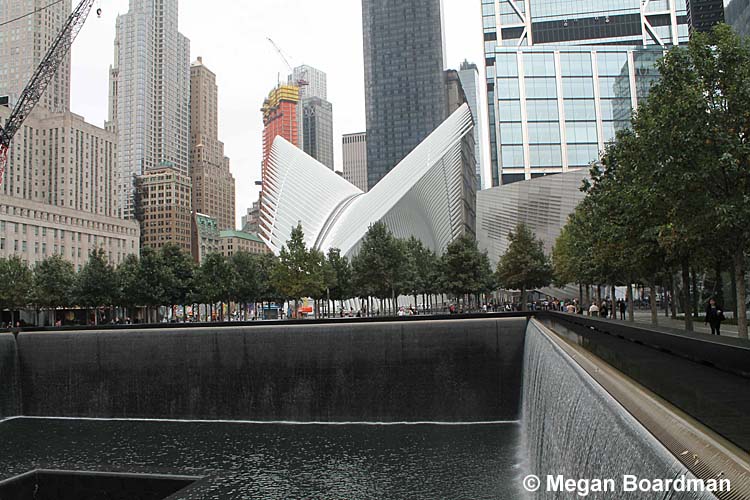 ..... was to
conceive the building at grade, the
'Oculus', as a free standing
structure and situate it along the
southern edge of Daniel Libeskind's
'Wedge of Light' plaza. This
treatment of the site creates a kind
of pause amid the dense commercial
towers and links the procession of
green spaces extending from City
Hall Park to the churchyard of St.
Paul's, through the WTC
Transportation Hub plaza to the
gardens of the Memorial and Battery
Park along the Hudson. "
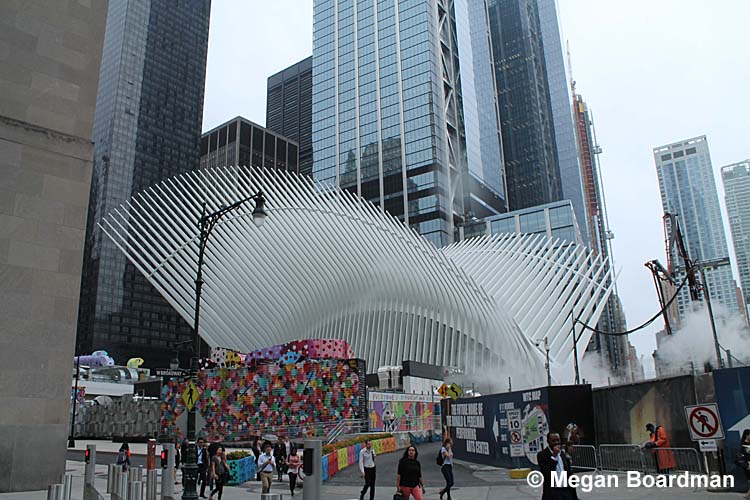 "The 'Oculus'
is comprised of steel ribs and glass
arrayed in a large elliptical shape.
The ribs extend to create two
canopies over the north and south
portions of the plaza.
The rafters spring from two 350 ft
arches flanking the project's
central axis. Between the arches, a
330 ft operable skylight frames a
slice of the New York sky, and opens
on temperate days as well as
annually on September 11. "
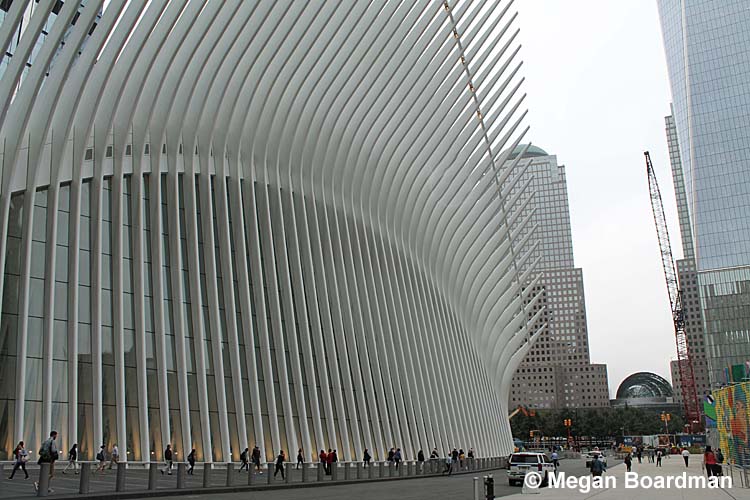 "Access into
the building is provided from Church
and Greenwich Streets through the
east and west arch abutments of the
Oculus. .....
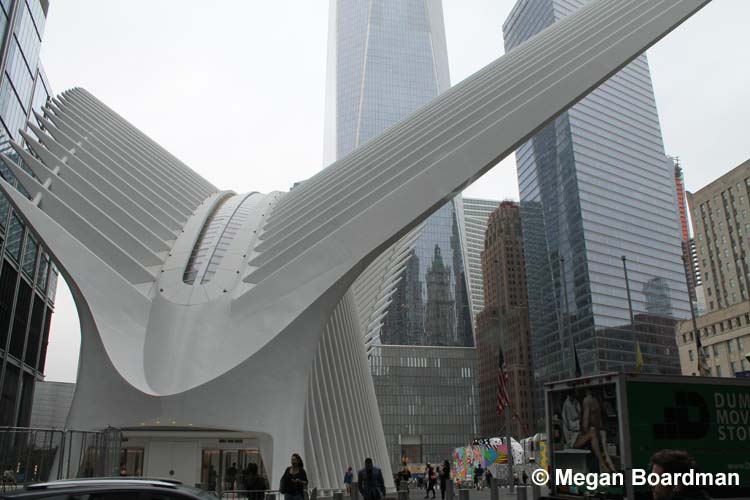 ...... Entry
stair landings cantilever over the
large below grade piazza called the
Transit Hall. Escalators, elevators
and stairs provide access to the
upper and lower retail concourse
levels. The lower concourse is
approximately 34 ft below street
level, and 160 ft below the apex of
the operable skylight. The
column-free elliptical space is
approximately 350 ft long, by 115 ft
across at its widest point."
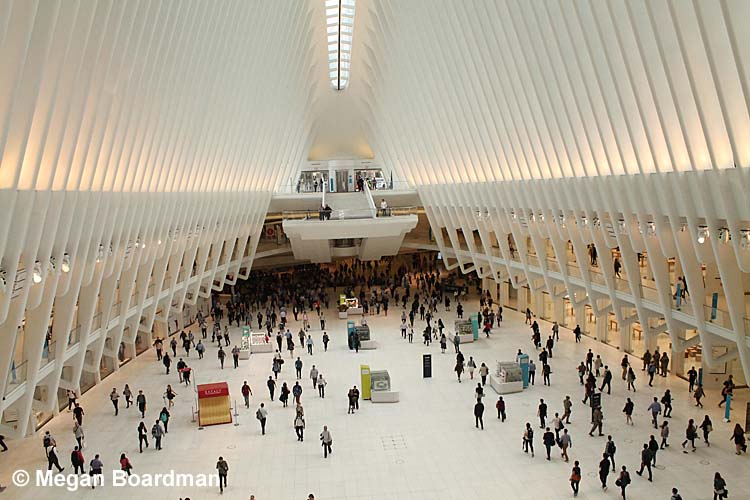 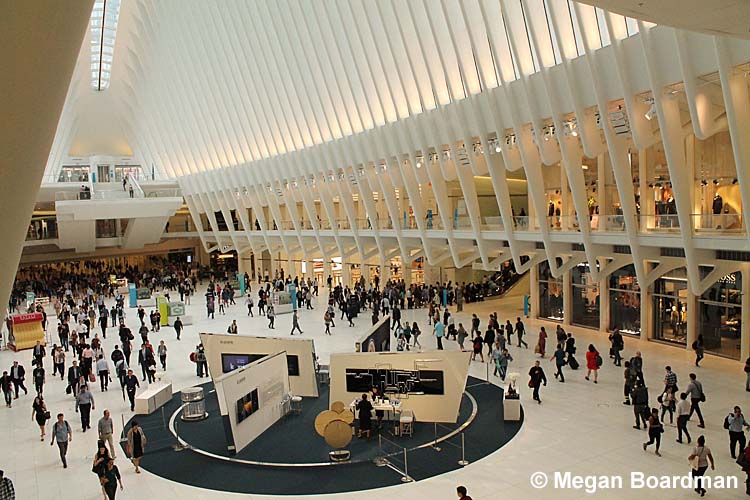 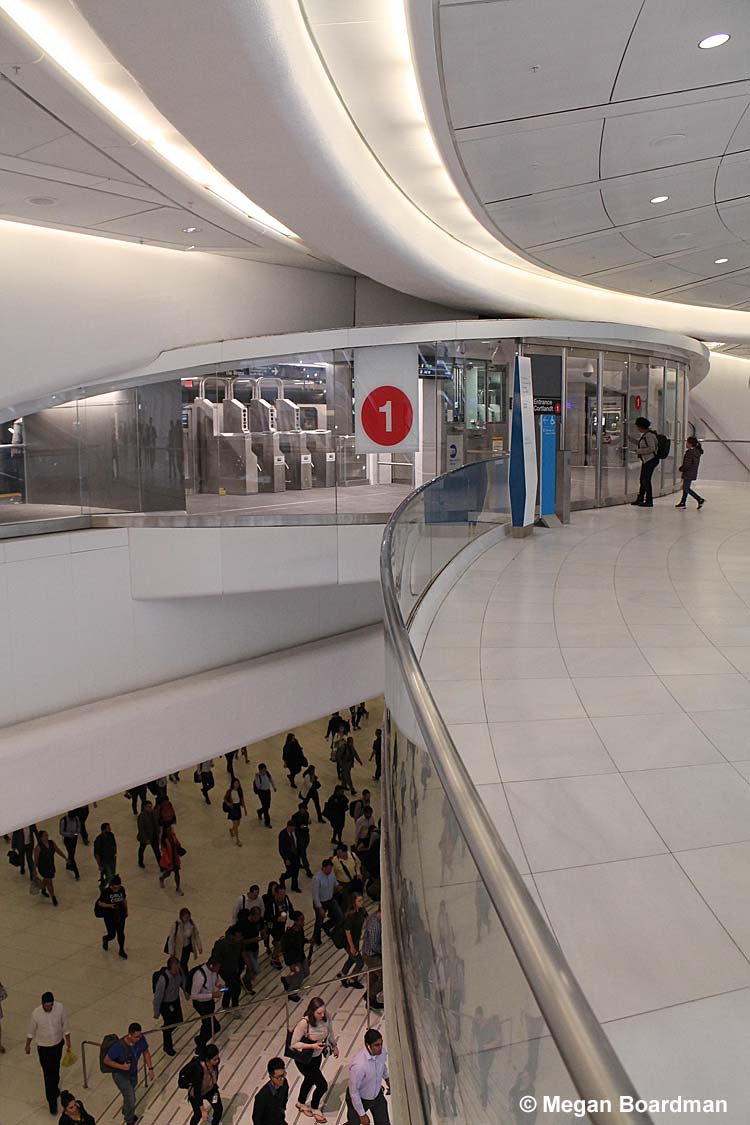 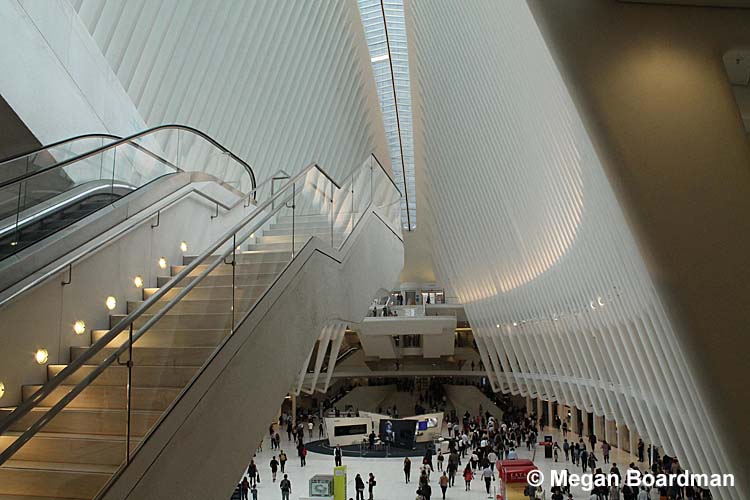 As with many of
Calatrava's buildings, the Oculus is not
without its critics. Writing in
the Guardian on March 4, 2016 Jimmy
Stamp said, "... I despised the
new World Trade Center
transportation hub before I even saw
it. It’s $2bn over budget, has
suffered from construction problems
and design compromises, it’s seven
years late and still incomplete, and
its architect, Santiago Calatrava,
has left a trail of lawsuits and
angry clients around the
world. By most measures, the
new hub is a debacle of
extraordinary scale and, I believed,
it had earned my derision. But when
I was standing on the marble floors
in its enormous, gleaming central
concourse two stories below street
level, staring up at a clear blue
sky between bone-white ribs vaulting
160ft over my head, I, like Jonah in
the whale, repented – at least for
the moment." He ended
the article by concluding that, "...
The Oculus is deeply
flawed, but I appreciate its
aspiration and grandeur. In my
review of Fulton Center, the other
downtown transportation nexus
located just one block away, I
lamented the building’s utilitarian
“transit vernacular” and its lack of
artistry or ambition, calling it “a
vision of New York’s cold future”.
The Oculus presents a more
optimistic vision, one based less on
present realities and more on future
possibilities. Less Blade Runner,
more Star Trek."
|
|
|
The
Oculus - The World Trade Center Transportation Hub,
New York
 |
